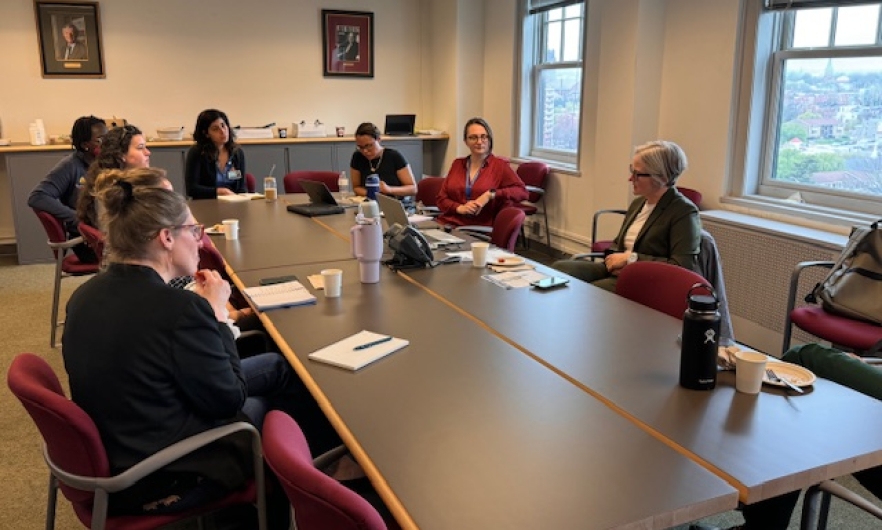The Relationship Between Medicaid Home and Community Based Services and Medicare Home-Based Services

The Roger and Flo Lipitz Center to Advance Policy in Aging and Disability was honored to recently host Dr. Tamara Konetzka, Louis Block Professor of Public Health Sciences at the University of Chicago, as a visiting professor. Dr. Konetzka is an expert in health economics and public health sciences, member of MEDPAC, and internationally recognized for her expertise in the health economics of post-acute and long-term services and supports.
We are fortunate that Dr. Konetzka is a member of the external advisory panel to our NIA T32 training program. In this capacity, she met with pre- and post-doctoral trainees. She delivered a seminar to discuss her foundational work to better understand the relationship between Medicaid Home and Community Based Services and Medicare Home-Based Services, and shared insight on working with Medicaid data with a working group that is now being formed within our JHU community.
Read the key takeaways below:
- Medicaid and Medicare both have a crucial role in home and community-based care. Medicaid funds long-term services and supports and Medicare provides coverage for home-based care, particularly post-acute care (PAC) through the skilled home health benefit.
2. There is a gap in our understanding of how these programs intersect in practice, due in part to data constraints.
3. With population aging and value-based care, there is strong interest in identifying challenges and best practices that hold promise for improving the effectiveness of home-based care models.
Written by Kayla Hare, MA, MFA, and edited by Danielle Peereboom, MPH, and Jennifer Wolff, PhD
